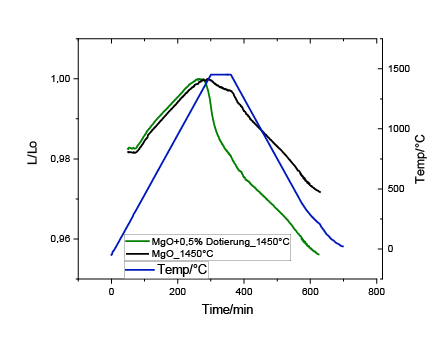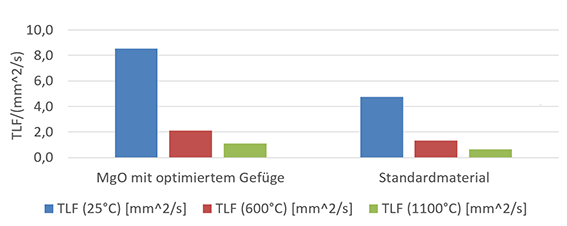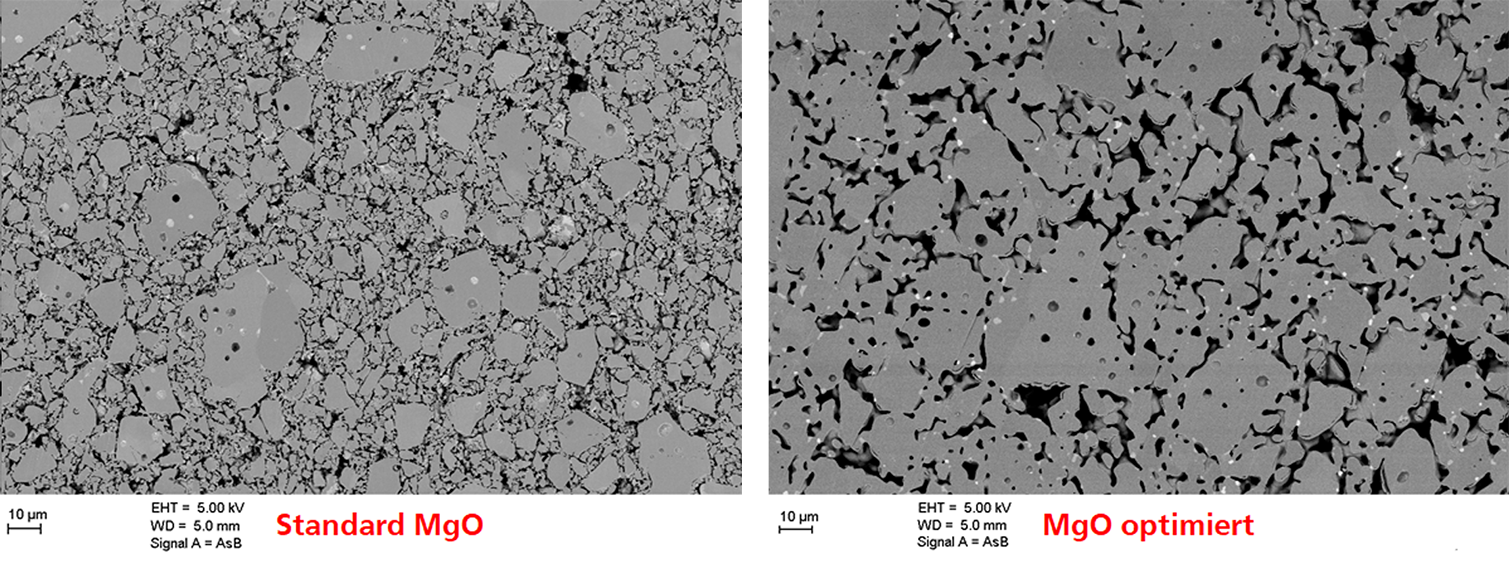Completed funded project
Motivation

Left: Extrusion of MgO coils (source: TechnoKer); Right: Thermocouple (source: GC-heat)

Left: Mini Kneader from Linde: Set up at the HTL for transfer to the pilot plant scale at Technoker; Right: SEM image of a heating element with different MgO layers and recesses (white) for two contact wires.
- Magnesium oxide ceramics (MgO) are used as embedding or insulation material in heating cartridges, temperature sensors and safety cables.
- Future areas of application for MgO components require an improvement of the product properties and the manufacturing process.
- Cheap products from the Far East require innovative materials.
- The global market for technical MgO ceramics of high purity has shown continuous growth for years and reached a volume of 10,000 to 15,000 t for 2016.
Objective

Shrinkage curves of undoped MgO (black) and with 0.5 wt.% doping (blue)

Thermal diffusivity (TLF) of doped and undoped (standard) MgO at different temperatures
- Development of MgO ceramics with improved property profile in terms of:
- Thermal conductivity
- Electrical resistance even at high temperatures
- Workability and durability
- Determination of suitable additives and processing methods
- Optimised thermal processes with regard to property profile, processability and energy efficiency
Results

SEM images: left: Microstructure without doping, hardly any sintering necks -> poor thermal diffusivity right: Microstructure with 1% doping, clearly more sintered -> improved thermal diffusivity
- Identification of important microstructural requirements to achieve the material requirements: Sinter neck formation for heat transport, electrically insulating additives, minimisation of impurities (Fe, Ca, Si etc.).
- Determination of suitable additives by literature research and calculation of the thermo-dynamic stability using FactSage®.
- Adjustment of an improved microstructure with adapted microstructure composition and defined sinter neck formation via particle size distribution, doping elements and their content as well as purity of the raw materials
- Optimised sintering curve: Determination of an optimal, partially sintered state by means of TOM > Reduction of the sintering temperature by up to 140 K
- Improvement of thermal diffusivity by up to 40% at 1100°C compared to undoped version
- Set-up of the dielectric strength test in TOM plants
- Transfer to the pilot plant scale: set-up of a mini-kneader
Project Data
| Project Duration | 01.09.2018 - 28.02.2021 |
| Sponsor | Federal Ministry of Education and Research |
| Funding Amount | 180,000 Euro |
| Project Partners | Fraunhofer-Centre HTL GC-heat Gebhard GmbH & Co. KG TechnoKer GmbH |
| Project Coordination | KMU Innovativ "Materials Research for Energy Technology" |
| Project Management at the HTL |
Marina Stepanyan |

 Fraunhofer ISC, Center for High Temperature Materials and Design HTL, Bayreuth
Fraunhofer ISC, Center for High Temperature Materials and Design HTL, Bayreuth